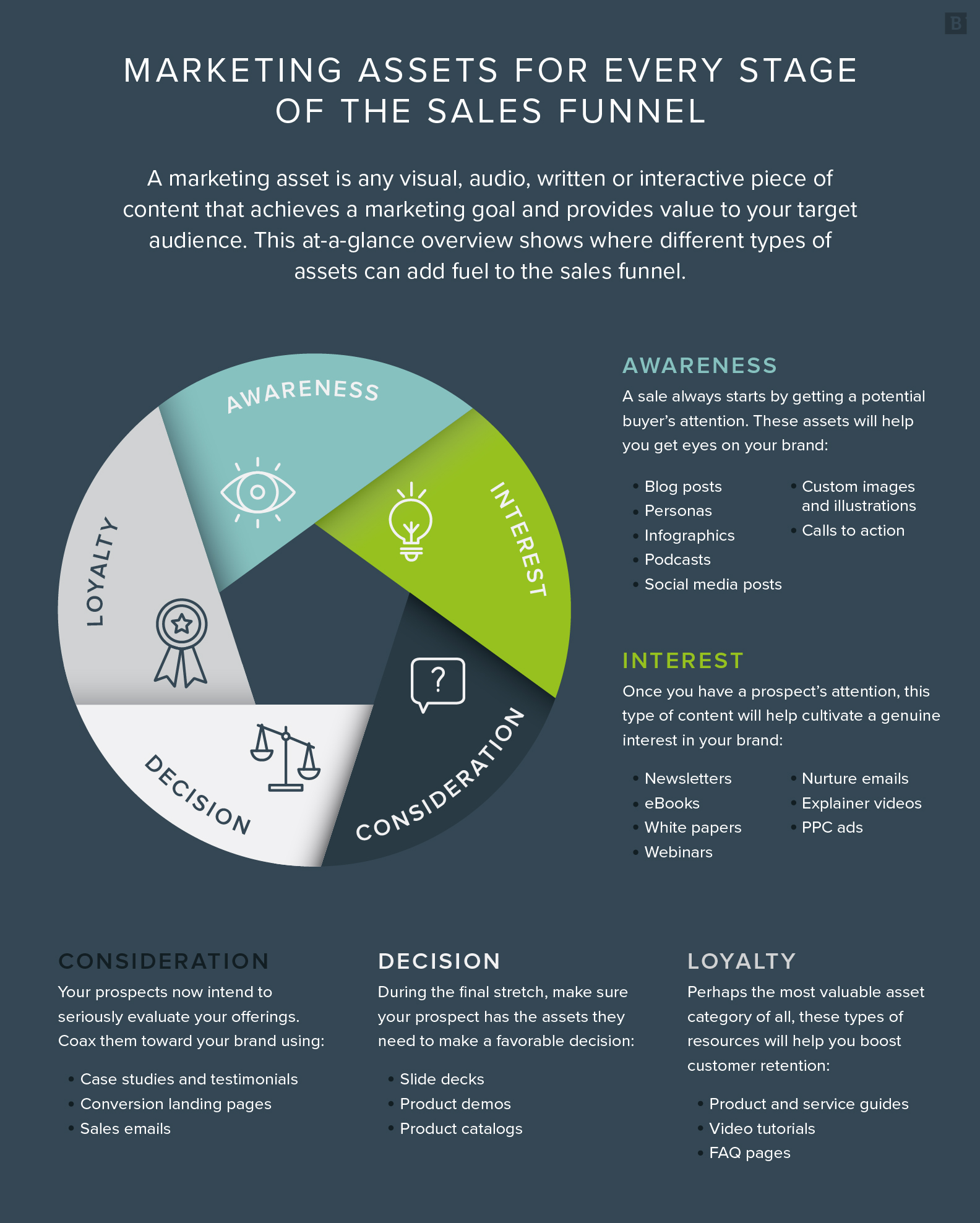The funnel details the customer journey, eventually ending in a sale. It’s something sales and marketing teams are going to be very familiar with. The sales funnel has had more iterations than The Artist Formerly Known as Prince had names, but the focus here is to go beyond the regular old funnel and get into the inbound marketing version of it.
We’re going to go through the parts that make up the modern marketing funnel, and then go down the funnel ourselves, step by step.
But first, let’s break down the classic funnel and why it’s such a prominent image in the business world.

The Original Sales Funnel
The original sales funnel as we know it was invented by Elias St. Elmo Lewis in 1898. His funnel was the first to visualize the entire buying journey of the customer. The stages formed the linear hierarchy of attention, interest, desire and action (AIDA). At the time, Lewis was focused on using this theory to help the personal selling process, meaning selling products directly to the customer.
The sales funnel was quickly taken over by marketing and advertising theorists, however. They believed the ultimate goal of the sales funnel should be encouraging action on the part of the customer. In other words, the customer should feel compelled to buy the product that’s advertised to them by the time they reach the end of the funnel. This changed the trajectory of the sales funnel to head in a direction that we’re much more familiar with today.
This funnel depicts the basics of making a sale, but it’s missing a lot of important steps that can make a huge difference in whether or not a sale is made. These missing steps are what led the funnel to be iterated upon several times over, as the needs of marketing teams, as well as the customer, have changed over time.
Inbound Marketing
Now that we have the general gist of the funnel, let’s talk about inbound marketing. Inbound marketing is there to pull customers in by informing and interacting with them. Outbound marketing hinges on blasting a message out to a wide audience.
Inbound marketing involves getting your message in front of your target audience, or the demographic that is most likely to follow through with a purchase. This means you can create a more focused content marketing campaign, and save part of your budget that would otherwise go to blindly advertising to the public.
Subscribe to
The Content Marketer
Get weekly insights, advice and opinions about all things digital marketing.
Thank you for subscribing to The Content Marketer!
So, what kind of marketing is considered inbound? I thought you’d never ask:
- Blogs.
- Emails.
- Videos.
- Social media posts.
The common denominator here is you’re engaging the customer with content. It’s about starting a conversation with a potential customer and earning customer awareness instead of bombarding them with slogans.
Not only should inbound marketing be a tool to get leads through the customer journey, but it should also enhance every step of their journey along the way. You don’t just want to attract people’s attention; you want to retain it.
The best case scenario would be when someone is searching for a particular bit of information that happens to be relevant to your industry or product, and they stumble upon a recent blog post. Now they’re learning about the information they were seeking while being exposed to your brand.
If your blog is one of the top results when potential customers are searching for content about your industry, they’re going to be much more likely to see you as a credible source.
The Buyer Persona
Before you can successfully move a lead through the funnel, you have to have a thorough understanding of your target audience. Putting your ads in front of the wrong people is as bad as not having a marketing campaign at all.
Showing relevant content to your target audience is a surefire way to generate leads. But how do you identify those people?
It isn’t an easy process, but it is necessary for an effective marketing campaign that ends in conversions.

The Inbound Marketing Funnel
We’ve officially made it. It’s time to put all the pieces together. This isn’t just your classic funnel with extra steps; it adds all new dynamics and accounts for more targeted ways of marketing toward leads.
Now, it should be said that the inbound marketing sales funnel might not work for every company, as each one should be suited to their individual marketing needs.
Return to AIDA
Let’s return to the original sales funnel again for a second. In it, we had these steps:
- Attention: This is when you advertise and grasp the attention of your target audience.
- Interest: Here, you’re creating interest in your product, making prospective customers want to research further.
- Desire: The customer will make their interest in a product known to the company.
- Action: This is the act of the customer buying the product, which could be followed up with brand advocacy by the customer if they like the product.
Going Down the Inbound Funnel
The modern inbound marketing funnel iterates on these ideas in a way that’s much more suitable to present day marketing channels and how we interact with customers. It integrates customer stage, content type and traffic source.
Here are the stages of a more modern funnel:
- Awareness Stage: This is the section at the top of the funnel (TOFU). It’s here that people are discovering your brand for the first time and looking into your content and messaging. They aren’t interested in making a purchase yet.
- Interest Stage: This is where the prospects who are interested in learning more about your product or service go next. They’re trying to assess whether your offering can fulfill their needs. This section is known as the middle of the funnel (MOFU).
- Consideration Stage: This stage is the moment of truth. Prospects are heavily considering making a purchase and are comparing your prices and services with competitors, while also consulting with their internal stakeholders to ensure they’re making the right choice. From here, prospects will transition to the bottom of the funnel (BOFU), provided they go through with the purchase.
- Purchase Stage: This is where conversions happen. Here, a lead has ultimately made the decision to purchase your product or service after making all of the necessary considerations and consulting with internal stakeholders, as well as your sales reps. After this, the details will be pinned down between both parties and a contract will be secured.
Walking Through the Inbound Marketing Funnel
Now that we’ve established the individual parts that make up the inbound marketing funnel, let’s put them all together and walk through it, step by step. Included at each stage is the types of content that we suggest to be shown to leads at that point.
Awareness
First, we start with driving traffic. We want to pull people into the top of the funnel from our various sources, whether that’s through links, searches, social media or another channel. We want to direct traffic toward one of our many pieces of content.
Traffic Sources
Of course, any funnel is useless if it can’t pull in an audience to go through it. As mentioned above, this same funnel accounts for capturing leads from traffic sources as well.
These sources include:
- Organic and paid search.
- Referral traffic.
- Direct traffic.
- Retargeting.
- Organic and paid social.
- Email traffic.
When pulling in traffic, you want your brand to be visible anywhere your target audience could potentially see it. That way you’re getting leads that are most likely to become conversions.
Once inside the top of the funnel, the leads are now in the awareness stage. They’re viewing various pieces of content and informing themselves about a topic that your company has expertise in, while also being exposed to your brand. This is where a blog or podcast could lead to a newsletter subscription to your content.
Suggested content: blogs, infographics, social media posts, podcasts, short videos.
Interest
Consuming your content may build interest in your product or service for the lead, making them research your product more deeply. This is when they enter the interest stage.
It’s likely that a lead may have already subscribed to your newsletter or content. They may seek out longer forms of content, like eBooks, white papers or webinars. It’s at this point that email marketing automation can step in to help nurture leads by sending emails regarding articles they’ve read or products they’ve clicked on.
Suggested content: eBooks, white papers, explainer videos, newsletter and drip emails.
Consideration
From there, leads transition into the consideration phase. You should continue to nurture these leads with content, like case studies and testimonials, convincing them that purchasing your product will be the right decision. The goal here is to have the lead reach out to your sales team to request a demo or move straight into the purchasing stage.
Suggested content: case studies, customer testimonials, sales emails.
Purchase
Finally, we have the purchase stage at the bottom of the funnel. With the purchase of your product, the lead becomes a conversion.
In a B2B context, that means contract negotiations have ended and a new business relationship has formed.
In a B2C context, hopefully you have a happy new customer.
I say “hopefully” because the relationship with customers doesn’t just end at the point of sale. You want to follow up on their transaction and ask them to review your product, and encourage them to reach out for support if they aren’t satisfied.
Suggested content: product demos and tutorials, on-location and in-studio video testimonials, sales collateral.
Build Your Funnel
To reiterate, no two company’s funnels should be exactly the same. The steps may be similar, but the content to get there depends heavily on your industry and audience preferences. A combination of engaging content and a strong inbound marketing strategy will help ensure follow-through at every level of your funnel.
Do you know what your funnel looks like?







